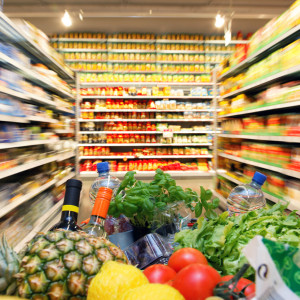A provocative new study projects more car wrecks and worse food safety in the future because of climate change. According to the authors, higher temperatures are more hospitable to food-borne pathogens (like salmonella) and lead to poor driving. In addition, “exposure to hotter temperatures reduces the activity of two groups of regulators — police officers and food-safety inspectors — at times that the risks they are tasked with overseeing are highest.”
These are good things to consider. We should be thinking about the unexpected when it comes to environmental (and indeed any major) changes to the world we live in. But when you hear an alarming projection about the future, don’t forget about the “I” factor: human ingenuity, invention and innovation.
There is a key phrase in the study that many non-scientists overlook: “ceteris paribus.” That’s Latin for “all other things equal.” To predict risks 30 to 80 years in the future if nothing else changes is like saying, “You are driving toward a cliff and, ceteris paribus, you’ll die in a flaming car crash.” Perhaps you have time to turn or hit the brakes.
By necessity, researchers must work with the data they have — but that doesn’t change the fact that we can’t predict the world as it will be decades from now. Today’s traffic and food-safety challenges won’t necessarily be tomorrow’s.
Let’s start with traffic safety. Loup Ventures’ Gene Muster predicts we will begin to notice driverless cars by 2020, and his company estimates that 95 percent of new vehicles sold by 2040 will be fully autonomous. Because autonomous vehicles hold enormous promise to reduce accidents, this could turn the auto insurance, body shop and auto parts industries — which partly depend on more than 6 million crashes per year — on their heads, to say nothing of hospital emergency rooms, orthopedic surgeons and police.
In fact, many vehicles including long-haul and delivery trucks may not even have human passengers. So even if there is a crash, there’s no guarantee anyone will be at risk. Given that these cars and trucks will be programmedto obey the laws — which also might be quite different in 30 years — we may be far less reliant on police to manage our roads.
Now consider food safety. The Centers for Disease Control estimates around 48 million cases of food-borne disease each year (resulting in 3,000 deaths), which inadvertently highlights decades of failed FDA and USDA regulations — but technology might finally make some long-awaited breakthroughs.
Think about what already exists. Consumers can now receive alerts from smart refrigerators, meaning fewer people eating spoiled food and smaller outbreaks. Whole genome sequencing will help manufacturers identify and track pathogens. Quick Response bar codes (those black squares that look like a puzzle map) and blockchain technology are also poised to help trace problematic foods to their sources, which will also limit the size of outbreaks.
There will also likely be fewer food-borne disease outbreaks to begin with. Food companies that traditionally rely on pasteurization — essentially high temperature cooking — are experimenting with electromagnetic waves, electric currents and infrared heating. For fruits and vegetables eaten raw and other minimally processed foods, companies are experimenting with high pressure, electricity, ultraviolet light and irradiation.
Intelligent food packaging using nanotechnology is being designed to alert us to food-safety problems inside the package and even use antimicrobial sprays to deactivate pathogens. Even that tech may be obsolete as 3D food printers are now on the market — no, this isn’t science fiction — preparing what we need, when we need it, and eliminating the spoilage between creation and consumption.
Will all of these things come to pass? Probably not. But this is only a sampling of what we know about now. Had this op-ed been written in 1989, not quite 30 years ago, there would have been no World Wide Web with which to locate and categorize these technologies. What will tomorrow hold?
Dire predictions about problems decades out serve a useful purpose by alerting us to the serious challenges we will inevitably face. But ingenuity, invention and innovation will be on our side. Problems are instantly turned into market demands for which entrepreneurs naturally want to supply a solution. Human ingenuity nearly always finds a way. So, don’t panic.

